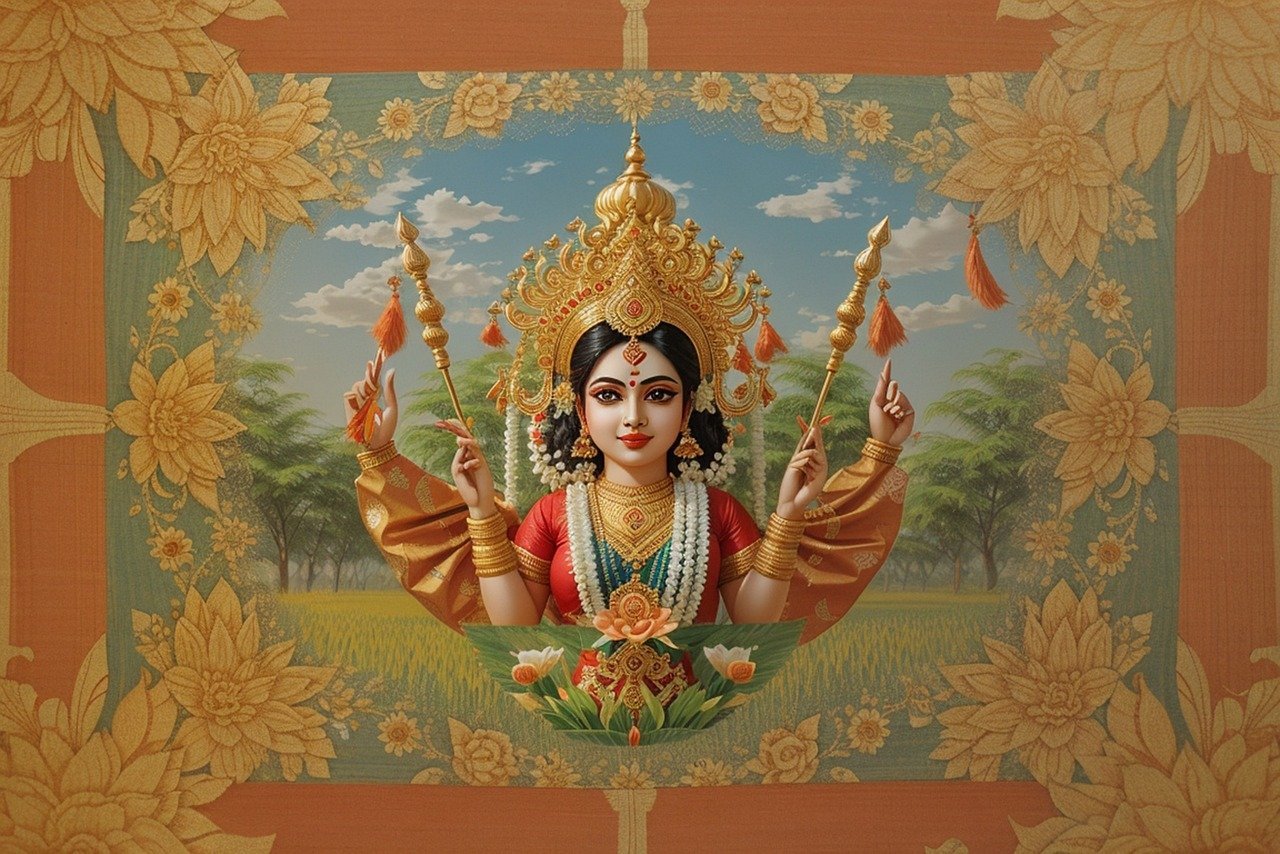Navratri is a nine-night Hindu festival dedicated to the worship of Goddess Durga. Its name is derived from the Sanskrit words “Nav,” signifying nine, and “Ratri,” meaning night. This festival typically falls in the autumn months of September or October and is celebrated with great enthusiasm and devotion, especially in India.
Key features and traditions of Navratri include:
- Goddess Durga: Navratri is primarily dedicated to the goddess Durga, who is considered the divine mother and the embodiment of Shakti (divine feminine energy). She is worshiped in various forms during these nine nights.
- Nine Nights and Nine Forms: Each of the nine nights is associated with a specific form of Durga, and her manifestations are celebrated with prayers, fasting, and rituals. The nine forms are Shailaputri, Brahmacharini, Chandraghanta, Kushmanda, Skandamata, Katyayani, Kalaratri, Mahagauri, and Siddhidatri.
- Fasting and Devotion: Many people observe fasts during Navratri, refraining from consuming certain foods, and some even avoid grains and non-vegetarian food. Devotees engage in prayers, bhajans (devotional songs), and aartis (rituals with lighted lamps).
- Garba and Dandiya: In Gujarat and other parts of India, people celebrate Navratri by performing Garba and Dandiya dances. These are colorful and energetic group dances, often accompanied by traditional music and costumes.
- Kolu/Doll Display: In South India, particularly in Tamil Nadu and parts of Karnataka, families set up a display of dolls and figurines in their homes. This display, known as Golu or Kolu, is a major part of their Navratri celebrations.
- Vijayadashami: The tenth day of Navratri is celebrated as Vijayadashami or Dussehra, which symbolizes the triumph of good over evil. It is the day when Lord Rama is believed to have defeated the demon king Ravana, marking the victory of righteousness.
- Durga Puja: In West Bengal, Navratri is celebrated with grand processions and elaborate decorations. Durga Puja is the most significant festival, with beautifully crafted idols of the goddess being immersed in water on the last day, Vijayadashami.
- Social Gatherings: Navratri is a time for families and communities to come together. It’s a time of socializing, feasting, and celebrating the festive spirit.
The specific customs and traditions associated with Navratri can vary from region to region, but the central theme of worshiping the divine feminine and celebrating the victory of good over evil remains consistent. Navratri is a time of spiritual reflection, devotion, and cultural festivities that hold deep significance for millions of people in India and around the world.
Also Checkout | Legend APJ Abdul Kalam: All you need to know |
How to worship in Navratri?
Worship during Navratri is a sacred and important ritual. On the first day of Navratri, you can perform a special puja to invoke the blessings of Goddess Shailaputri, the first form of Goddess Durga. Here are the steps to perform the worship on the first day of Navratri:
Materials Needed for Navratri Pooja:
- A picture or idol of Goddess Shailaputri or an image of Durga.
- A clean and quiet place for the puja.
- Incense sticks or dhoop for fragrance.
- A lamp (diya) with ghee or oil.
- Flowers for the offering.
- Fruits, sweets, or any other food items for prasad.
- A bell.
- Kumkum (vermilion) and turmeric.
Procedure:
- Purification: Begin by purifying yourself by taking a bath and wearing clean clothes.
- Set Up the Altar: Place the picture or idol of Goddess Shailaputri on the altar or a clean, decorated space. You can decorate the area with flowers, rangoli, and other festive items.
- Light the Lamp: Light the lamp (diya) with ghee or oil, and place it in front of the idol or image.
- Incense and Bell: Light the incense sticks or dhoop. Ring the bell as you do this, creating a melodious and devotional atmosphere.
- Offering of Flowers: Offer fresh flowers to the goddess. You can chant mantras or prayers while doing this to invoke her blessings.
- Chanting and Mantras: Recite the specific mantras associated with Goddess Shailaputri. One of the common mantras is “ॐ देवी शैलपुत्र्यै नमः” (Om Devi Shailaputryai Namah). Chant this mantra with devotion.
- Prasad: Offer fruits, sweets, or any other food items as prasad to the goddess. It is considered blessed and should be shared with your family members or guests after the puja.
- Aarti: Perform the aarti by moving the lit lamp in a circular motion in front of the goddess. Sing or recite aarti songs or stotras dedicated to Goddess Shailaputri.
- Kumkum and Turmeric: Apply kumkum and turmeric on the goddess’s feet and forehead as a symbol of respect and auspiciousness.
- Prayer and Meditation: Spend some time in silent prayer and meditation, seeking the blessings of Goddess Shailaputri for health, strength, and protection.
- Closing: Conclude the puja by bowing down to the goddess and expressing your gratitude. You can also perform a pranam (salutation) to seek her blessings.
It’s important to perform the puja with a sincere heart and devotion. Throughout the nine days of Navratri, the process is similar, but you will be worshiping different forms of Goddess Durga on each day. Each form represents different aspects of the goddess, and the puja rituals can vary slightly.
